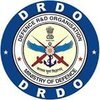Filter interviews by
Vem Technologies Electrical Engineer Interview Questions and Answers
Vem Technologies Electrical Engineer Interview Experiences
1 interview found
I applied via Referral and was interviewed before Apr 2023. There was 1 interview round.
(2 Questions)
- Q1. Difference between armature voltage control field control?
- Ans.
Armature voltage control involves changing the voltage applied to the armature of a DC motor to control its speed, while field control involves changing the field current to control the motor's speed.
Armature voltage control adjusts the voltage applied to the armature winding of a DC motor to control its speed
Field control adjusts the field current in the motor to control its speed
Armature voltage control is more commo...
- Q2. Design a boost converter?
- Ans.
A boost converter is a type of DC-DC converter that steps up the input voltage to a higher output voltage.
Use a switch (usually a MOSFET) to control the energy flow from input to output
Include an inductor to store and release energy
Add a diode to allow current flow in one direction
Use a capacitor to smooth out the output voltage
Implement a control circuit to regulate the output voltage
Interview Preparation Tips
Top trending discussions






Interview questions from similar companies

Interview Questionnaire
2 Questions
- Q1. Explain about the current projects i have dealt with
- Q2. Questions related to regression fitting

Interview Questionnaire
1 Question
- Q1. Basic avionic domain questions

Electrical Engineer Interview Questions & Answers
Honeywell Technology Solutionsposted on 23 Sep 2024
I applied via Referral and was interviewed in Aug 2024. There were 3 interview rounds.
Good one it was easy and knowledgeable
(3 Questions)
- Q1. Explain about yourself
- Ans.
I am a dedicated and experienced Electrical Engineer with a passion for problem-solving and innovation.
Graduated with a degree in Electrical Engineering from XYZ University
Worked for 5 years at ABC Company, specializing in power systems design
Proficient in CAD software and project management tools
Strong analytical and problem-solving skills
Completed several successful projects, including designing a new circuit board f
- Q2. What is a generator working principle
- Ans.
A generator works on the principle of electromagnetic induction to convert mechanical energy into electrical energy.
Generators use a magnetic field and a conductor to create a flow of electrons, generating electricity.
The mechanical energy can come from various sources such as turbines, engines, or hand cranks.
Examples include hydroelectric generators, wind turbines, and diesel generators.
- Q3. What is working of actuator
- Ans.
An actuator is a component of a machine that is responsible for moving or controlling a mechanism or system.
Actuators convert electrical signals into mechanical movement.
They can be used in various applications such as robotics, automotive systems, and industrial machinery.
Examples of actuators include solenoids, motors, and hydraulic cylinders.
(2 Questions)
- Q1. Explain about yourself
- Ans.
I am a dedicated and experienced electrical engineer with a passion for problem-solving and innovation.
Graduated with a degree in Electrical Engineering from XYZ University
Have X years of experience working in the field, specializing in power systems
Proficient in using software such as AutoCAD and MATLAB for design and analysis
Led a team in implementing a new energy-efficient lighting system in a commercial building, r
- Q2. What are your strengths
- Ans.
My strengths include problem-solving skills, attention to detail, and strong technical knowledge.
Strong problem-solving skills - able to analyze complex electrical systems and troubleshoot issues effectively
Attention to detail - ensuring accuracy in design and implementation of electrical projects
Strong technical knowledge - staying up-to-date with industry trends and advancements in electrical engineering
Effective com...
Interview Preparation Tips

Senior Engineer Interview Questions & Answers
Honeywell Technology Solutionsposted on 28 Feb 2024
Was asked to write a program for linked list
(1 Question)
- Q1. Was asked to explain program and some logical questions
(1 Question)
- Q1. Normal Salary discussion
Interview Preparation Tips

Senior Engineer Interview Questions & Answers
Honeywell Technology Solutionsposted on 21 Dec 2024
I applied via Recruitment Consulltant and was interviewed before Dec 2023. There were 3 interview rounds.
(2 Questions)
- Q1. Basics of htm javascript es6 angular
- Q2. Css scss
Interceptor concepts
(1 Question)
- Q1. Salary negotiation

I appeared for an interview in Feb 2025.
(5 Questions)
- Q1. Transformer erection and testing
- Q2. Transformer oil sampling and tap changer checking
- Q3. Generator rotor test
- Q4. Electrical maintenance question
- Q5. Battery bank and ups & Charger

I applied via Recruitment Consulltant and was interviewed in Jun 2023. There were 4 interview rounds.

(1 Question)
- Q1. Question from sheet metal domain Material science And previous work experience
(1 Question)
- Q1. Basic engineering questions Work experience
(1 Question)
- Q1. Salary negotiation and doj
Interview Preparation Tips
Be confident
Be ready to relocate
Be workoholic
Be optimistic

I applied via Naukri.com and was interviewed in Sep 2021. There were 2 interview rounds.
(6 Questions)
- Q1. Tell your experience about assembly tooling?
- Q2. How tooling elements you have designed and material selection?
- Ans.
I have designed various tooling elements and selected materials based on their properties and application requirements.
Designed tooling elements for manufacturing processes such as injection molding, stamping, and machining
Selected materials based on properties such as strength, durability, and heat resistance
Considered application requirements such as cost, weight, and environmental factors
Examples include designing i...
- Q3. Manufacturing process used?
- Ans.
We use a combination of CNC machining and injection molding for our manufacturing process.
CNC machining is used for precision parts
Injection molding is used for high volume production
We also use 3D printing for prototyping
Our manufacturing process is constantly evolving to improve efficiency and quality
- Q4. Surface finish requirement for tooling elements?
- Ans.
Surface finish requirement for tooling elements is critical for achieving desired product quality.
Surface finish affects the performance of the tooling element.
It impacts the appearance and functionality of the final product.
Surface finish is measured in Ra (roughness average) or Rz (roughness depth).
The required surface finish depends on the application and material being used.
For example, a mirror finish may be requi...
- Q5. What is GD&T and tell about some symbols you used?
- Ans.
GD&T stands for Geometric Dimensioning and Tolerancing. It is a system of symbols and rules used to specify the geometry of mechanical parts.
GD&T is used to ensure that parts fit together correctly and function properly.
Some common symbols used in GD&T include concentricity, perpendicularity, and flatness.
GD&T is often used in industries such as aerospace, automotive, and manufacturing.
It allows for more precise commun...
- Q6. Which software u used?
(3 Questions)
- Q1. Why are you looking for a change?
- Q2. What is your expected salary?
- Q3. How soon u can join?
Interview Preparation Tips
Skills evaluated in this interview

Senior Engineer Interview Questions & Answers
SOLAR INDUSTRIES INDIAposted on 27 May 2024
I applied via Approached by Company and was interviewed in Nov 2023. There was 1 interview round.
(1 Question)
- Q1. About your experience
Vem Technologies Interview FAQs
Tell us how to improve this page.
Vem Technologies Interviews By Designations
- Vem Technologies Engineer Trainee Interview Questions
- Vem Technologies Asst.Marketing Manager Interview Questions
- Vem Technologies Senior Engineer Interview Questions
- Vem Technologies Software Engineer Interview Questions
- Vem Technologies Electrical Engineer Interview Questions
- Vem Technologies Assistant Manager Interview Questions
- Vem Technologies Software Developer Interview Questions
- Vem Technologies Graduate Trainee Interview Questions
- Show more
Interview Questions for Popular Designations
- Electrical Supervisor Interview Questions
- Junior Engineer Electrical Interview Questions
- Electrical Technician Interview Questions
- Assistant Electrical Engineer Interview Questions
- Electrical Maintenance Engineer Interview Questions
- Diploma Electrical Engineer Interview Questions
- Manager – Electrical Interview Questions
- Electrical Maintenance Technician Interview Questions
- Show more
Vem Technologies Electrical Engineer Interview Process
based on 1 interview
Interview experience
Interview Questions from Similar Companies
Fast track your campus placements
Vem Technologies Electrical Engineer Reviews and Ratings
based on 1 review
Rating in categories
|
Design Engineer
102
salaries
| ₹2.5 L/yr - ₹7.5 L/yr |
|
Junior Engineer
83
salaries
| ₹2 L/yr - ₹4.5 L/yr |
|
Engineer
63
salaries
| ₹2.4 L/yr - ₹8.2 L/yr |
|
Assistant Engineer
59
salaries
| ₹3 L/yr - ₹5.8 L/yr |
|
Mechanical Engg. Design
39
salaries
| ₹2.6 L/yr - ₹8.2 L/yr |

Honeywell Technology Solutions

Tata Advanced Systems

Indian Army

GE
- Home >
- Interviews >
- Vem Technologies Interview Questions >
- Vem Technologies Electrical Engineer Interview Questions











